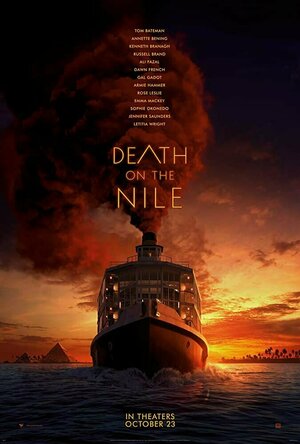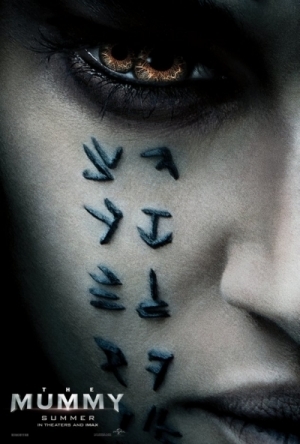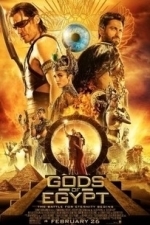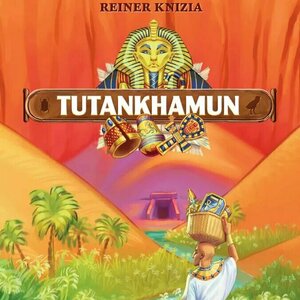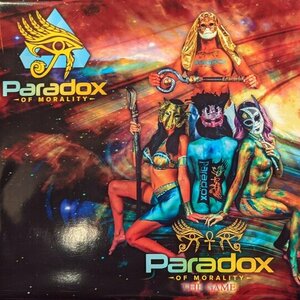BankofMarquis (1832 KP) rated Death on the Nile (2022) in Movies
Mar 16, 2022
And that is too bad for the latest Kenneth Branagh Hercule Poirot mystery DEATH ON THE NILE with Branagh starring, again, as the great Agatha Christie Belgian Detective is the stuff that makes going to movies fun - big characters, major stars, gorgeous scenery and a plot that will keep one guessing until the end.
Branagh’s previous work as Director and star of MURDER OF THE ORIENT EXPRESS was a bit of a disappointment as it was gorgeous and well cast - but the pacing of the film dragged and Branagh decided, inexplicably, to add an action scene to a drawing room mystery.
In DEATH ON THE NILE, Branagh (who Directed this film from an screenplay by Michael Green who adapted the Agatha Christie novel), corrected these mistakes and the film moves along spritely with the actors chewing the scenery - but quickly - making this a very enjoyable movie-going experience.
Branagh, in his second go-around as Poirot, seems much more relaxed and comfortable with his character. This is, perhaps, because they add a backstory to Poirot, so he has much more to set his character upon. On the surface, purists of the the Agatha Christie character will blanche at the thought of adding a backstory, but I’ll be darned if it doesn’t work and adds a layer of depth to the character and the film that I wasn’t expecting.
The All-Star cast knows what type of film they are in - and what is expected of them - and they deliver. Gal Gadot, Armie Hammmer, Rose Leslie, Letitia Wright, Jennifer Saunders, Sophie Okonedo and, surprisingly, Russell Brand all shine brightly in their “moment” that their character gets with Poirot. Special notice needs to be made of Annette Bening’s performance. It was GREAT to see this wonderful actress get a role she could sink her teeth into.
As always, with this type of film, the settings and costumes take a prominent position and they do not disappoint. Cinematographer Haris Zambarloukos should be hired by the Egyptian Chamber of Commerce for he lovingly shows the sites along the Nile River (circa ‘1930’s) in a beautiful poetic way while the Costumes by Pago Delgado are gorgeous and ornate - without being over-the-top.
If you get a chance to see DEATH ON THE NILE on the big screen, do so, you will be well rewarded for your efforts - and just might help get another of these big budget, big star mysteries made. If not, make sure to check this film out when it starts streaming near you - it’s a ton of fun.
Letter Grade: A-
8 stars (out of 10) and you can take that to the Bank(ofMarquis)

Currency Exchange - Currency Converter
Travel and Finance
App
Currency Exchange is powerful and elegant Currency Converter application for your iPhone & iPod...

VR Hollywood Blvd by Car Virtual Reality 360
Entertainment and Travel
App
Nice VR experience and beautiful memories if you already were there or if not, gain experience as if...
Movie Metropolis (309 KP) rated The Mummy (2017) in Movies
Jun 10, 2019
But for every success story there is a failed series that didn’t quite grab the cinema-going public with The Golden Compass and The Last Airbender immediately springing to mind. Nevertheless, Universal Pictures has pushed ahead with creating its own ‘Dark Universe’. Proceedings kick off with The Mummy. But how does this reboot fare?
Nick Morton (Tom Cruise) is a soldier of fortune who plunders ancient sites for timeless artefacts and sells them to the highest bidder. When Nick and his partner (Jake Johnson) come under attack in the Middle East, the ensuing battle accidentally unearths Ahmanet, a betrayed Egyptian princess (Sofia Boutella) who was entombed under the desert for thousands of years. With her powers constantly evolving, Morton must now stop the resurrected monster as she embarks on a furious rampage through the streets of London.
First-time director and long-time screenwriter Alex Kurtzman crafts a film that moves at breakneck speed, features a lot of nifty set-pieces and is an intriguing precursor to the next instalment of the franchise. It’s pretty good fun to be honest.
Tom Cruise is as reliable as ever, and does all the Tom Cruise staples; running, heavy breathing, shirtless preening, but the stand-out performance here is Russell Crowe’s Dr. Henry Jekyll (yes, that’s right). Despite being slightly underused, Crowe is a fantastic choice to play this multi-layered character. Elsewhere, Sofia Boutella is very good as Ahmanet.
Unfortunately, Jake Johnson (Jurassic World) and Cruise’s love interest Annabelle Wallis (King Arthur: Legend of the Sword) feel miscast with Wallis in particular having no believable chemistry with her co-star.
To look at The Mummy is first-rate. Gone are the campy special effects of the Brendan Fraser-era films, instead replaced with crisp CGI – though the dark and gloomy filming style hampers the obviously great effects. Nevertheless, the aircraft and subsequent crash sequences that have been marketed in the trailers are gripping and produced very well indeed.
Unfortunately, The Mummy relies heavily on jump scares, of which there are far too many, and the trade-off for that rollercoaster pace is a film that feels disjointed, relying on visually stunning action sequences to cover over cracks in the story. Some of the humour also falls flat.
Ultimately though, these are small gripes in a vastly entertaining popcorn flick that is a very solid starting point to a series that will include films like The Invisible Man, Bride of Frankenstein and The Wolfman.
Whilst not the most original film you will see this year, The Mummy opens up some intriguing doors and whilst I’m in no rush to see it again, despite its competence, I’m excited to see how Universal will bring all of their iconic monsters back to the big screen in one unified franchise.
https://moviemetropolis.net/2017/06/10/a-new-franchise-is-reborn-the-mummy-review/
Gareth von Kallenbach (980 KP) rated Gods Of Egypt (2016) in Movies
Aug 6, 2019
The trailers for this film set high expectations, promising a story of the mythical, god-like beings that come from Egyptian lore. But they also raised questions: would the story keep in tune with common mythos, or branch out into a whole new realm?
With Game of Thrones star Nikolaj Coster-Waldau taking the lead, along with 300’s Gerard Butler, the film starts off in a beautiful, ancient Egypt, ruled over by Osiris and his Queen. Horus, Osiris’s son (Coster- Waldau), is ready to assume the crown, but Set (Butler), brother to Osiris, has other plans. He feels scorned for having to live in the desert, and decides it is his time to rule all of Egypt. He murders Osiris, but leaves Horus alive, taking his eyes instead of his life.
Enter a thief, who wants to rescue his beloved from the clutches of Set’s architect (Rufus Sewell). The love of his life somehow talks him into rallying a dejected Horus to fight Set.
All the gods of Egypt are represented in some form or fashion, even if in minor capacity.
The gods have the ability to morph into larger, more powerful beings. They are nigh invincible, but still age, and die. They pray to Ra, god of the sun and grandfather to Horus.
This two-hour movie is filled to the brim with star-power, and superb acting. The special effects are a sight to behold, and they instill a sense of wonderment. The adventure is grand indeed, and will certainly leave you entertained.
That said, the script is sub-par. There are moments where emotional lines could be delivered, but aren’t. This is not from lack of trying on the part of the actors; the writers simply failed to find the proper words. In these moments, there was laughter from the audience at my viewing — during scenes clearly not meant for humor. This is the precarious knife-edge the movie walks between greatness and campy.
I’ve read several articles about how moviegoers are upset at the very Caucasian-looking cast. I shared this sentiment, to a certain degree. It seemed odd that a movie about a specific time and place in history made little effort to be ethnically accurate.
In the end, I let it go. The movie’s lore turned out to be so far from a real-world tie in that it no longer mattered. It was clear this was some sort of alternate universe; one of the major plot holes is a lack of connection to planet Earth.
If you can divorce yourself from some of these elements, you can really enjoy the film for what it is.
My screener companion said he didn’t care for the graphics, because they were obviously fake. I experienced this movie using animated films as my frame of reference, and that made it easier to watch. It is also clearly a High Fantasy film.
In summary: great acting is the glue that holds this film together. Without that talent, it wouldn’t stand up. It is, however, worth seeing if you love fantasy films. You will be entertained, for sure.
3.5 out 5 stars

Ibadat - Quran Qibla & Mosque finder
Lifestyle
App
** Most Popular Quran app on Store ** ** More than 100,000 Downloads ** ** Amazing user experience...
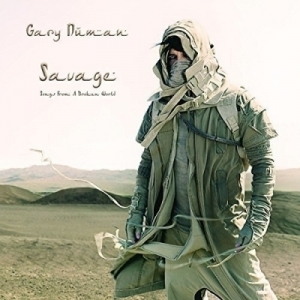
Savage (Songs From A Broken World) by Gary Numan
Album Watch
Coming almost four years after his album ‘Splinter (Songs From A Broken Mind)’ earned the best...
dance pop
Purple Phoenix Games (2266 KP) rated Tutankhamun in Tabletop Games
Jul 9, 2021
In Tutankhamun, players take on the roles of Egyptian priests attempting to cleanse their souls by gifting the sarcophagus with relics found along the Nile River. The priest who can cleanse their soul quickest will be proclaimed the next High Priest and winner of the game!
DISCLAIMER: We were provided a copy of this game for the purposes of this review. This is a retail copy of the game, so what you see in these photos is exactly what would be received in your box. I do not intend to cover every single rule included in the rulebook, but will describe the overall game flow and major rule set so that our readers may get a sense of how the game plays. For more in depth rules, you may purchase a copy online or from your FLGS. -T
To setup, place the King Tut sarcophagus on the table somewhere inside the box bottom. From this starting place (or you could place these components last I suppose), begin the laborious job of creating the Nile from the trapezoidal Relic TIles. This part took me a good several minutes each game. Place out the Underworld Mat near the start of the Nile, and place upon it the two Guardian Statue standees. From there give every player a reference card, have them choose a player color, place their boats at the start of the Nile, and Canopic Jar scoring markers on the appropriate space along the box bottom score track. The game may now begin!
Tutankhamun is played in turns starting with the starting player and proceeding clockwise. The starting player will choose ANY Relic Tile to collect and move their boat to that location. Once collected, the player will check to make sure there are still matching Relics along the Nile. If so, then play continues to the next player. If the active player had collected the last Relic of that type still active in the game, then the Relic type is scored.
Each Relic Tile features art of a Relic, a God, or a Scarab Ring. Relics come in sets, and when the final Relic of its type is collected, scoring immediately follows. Whichever player possesses the most Relic Tiles of the one being scored will earn points (or rather, negative points, as the priests are trying to cleanse their souls down to the winning score of zero) equal to the number printed on the tile. That number stands for the score earned as well as the number of Relics of that type in the game. The player with the second most Relics of the scored type will score half the number printed on the tile. All others do not score.
God Tiles feature art of one of five ancient Egyptian Gods: Osiris, Isis, Ra, Thoth, and Horus. Each of these Gods provide the collecting player with special powers to be used during the turn, and are always positive for the player.
Finally, Scarab Ring tiles are special in that they feature no number upon them. There are 10 tiles in the game, and as soon as a player collects one they immediately score one point (or one negative point). These tiles are not thrown into the box bottom, as the other scoring tiles are once scored, but are kept with the players to be scored at the end of the game. The player holding the most Scarab Tiles scores five negative points.
Any tile along the Nile that has been passed by all players is deposited onto the Underworld Mat and not added to the box bottom with the King Tut sarcophagus. Tiles may still be collected from the Underworld by permission of the Gods being collected in-game. Whichever priest is able to dwindle down their points and cleanse their soul first will win the game and become the next High Priest of Egypt!
Components. I am more and more becoming a fan of everything 25th Century Games is putting out. This is certainly no exception. I have seen photos of the original versions of this game, entitled Tutankhamen (with an E at the end instead of a U) and this game was certainly begging for a renovation. All the components have updated art, more vibrant colors, and the game even includes luxurious (and completely unnecessary) components. These are the very cool, but very unnecessary King Tut sarcophagus, and the Guardian Statue standees that add nothing to the gameplay but definitely help set the mood and theme. That all said, this version looks amazing on the table and has nearly infinite setup configurations!
What I like most about the game is the fact that on a player’s turn they can literally move forward to ANYWHERE along the Nile to gather whatever Relic they wish. They can pass up a tile or twelve along the way to snatch exactly what they want. However, the quicker a player reaches the sarcophagus does not automatically make them the winner. No, they still need to reduce their soul spirit score to zero in order to win (or be closest by the time all players reach the final spot). Conversely, dilly-dallying along the River just picking up every available tile also will not guarantee a victory. Specializing in a select few items may be the ticket to a victory, or setting oneself to win a couple types and win runner-up on the remainder may be a great path to victory.
Unlike many other games with this lazy race mechanic, the player furthest back does NOT get to keep taking turns to catch up (I’m looking at you, Tokaido), but rather just means that player has many more options ahead of themselves than the other players have. This is very interesting to me, and definitely something worth exploring more. It makes for tough turns when players have to really crunch which options are best for them: take the tile right ahead of them, diversify vs bolster the collection, or hate block another player by taking what you know they need. Ahh, so beautiful are the choices given!
At the end of the day (and this review), Purple Phoenix Games gives this one an Obama-meme-where-he-is-drinking-a-beer-and-giving-a-thumbs-up 5 / 6. I would certainly not have purchased this game in its original form had I seen it in a game store. However, with the changes made to make it more pretty, I would have given it a chance. I am so very glad I have the opportunity to play this a lot, as I can see this getting to the table allllllll the time. It is right up my alley, and I place it high among other Knizia games. Long live King Toot!!
Sophia (Bookwyrming Thoughts) (530 KP) rated Daughter of Isis (Descendants of Isis #1) in Books
Jan 23, 2020
The first book in Kelsey Ketch's <em>Descendants of Isis</em> series is a book with very heavy romance.
Of course, I was highly aware of that upon reading the synopsis.
But I'm an absolute sucker for mythology of all kinds (This is why I am highly interested in debut author Heidi Helig's <em>The Girl From Everywhere</em>. I mean, <em>Hawaiian</em>. Saucer eyes RIGHT here! I intend on waiting until the book is published, though.) and I simply couldn't resist myself. So instead of moping about the possibility of a heavy romance, I replaced my "NUUU ROMANCE" hat with my "TOLERABLE ROMANTIC" hat (the caps are intentional), sat back with my tablet (after transferring the review copy from the computer), and just hoped Ketch would take me on an unforgettable journey.
Natti has just moved from London to a small town in California after her Grandmother's death, with her only clue in a necklace she inherited. Since the first day Natti starts at her new school, Seth O'Keefe starts pursuing her in the hopes of seducing her.
Plus, Tolerable Romantic (I'll stop capping my hats now) hat says it's not exactly love at first sight Natti is completely resistant to Seth's attempts at charming her from the beginning, even though she sort of succumbs to his charms eventually. At that point in time, however, I know each of the characters well enough and have a particular fondness for each of them (for the first in a series) that it isn't awkward at all.
Ketch writes the book in two views: Natti's and Seth's. Natti's comparison of British life to American life and big city to a small town is mildly hilarious (we totally do everything backward). Even though she would rather remain in England, she smoothly transitions into her new life after meeting Wanda, Kevin, and Jen and being tucked under their wings.
Also, she has a fire in her I kind of like.
I honestly feel having Seth's view works out in the book's favor; hearing from his point of view makes him a lot more human than he comes out as with the other Sons of Set: someone who worships the Egyptian god Set and spreads chaos in the world on his behalf, hoping to eventually come across a secret from the past. They also sound insane and just want to take over the world one woman at a time.
It basically puts him in an entirely different perspective for readers than simply reading what Natti thinks of him.
<div class="separator" style="clear: both; text-align: center;"><a style="margin-left: 1em; margin-right: 1em;" href="http://3.bp.blogspot.com/-kFwoMM-NvD4/VodHIVFyhoI/AAAAAAAAFqQ/y-lTjSgr4j0/s1600/perspective.gif"><img src="http://bookwyrmingthoughts.bookblog.io/wp-content/uploads/sites/317/2016/01/perspective.gif"; width="320" height="240" border="0" /></a></div>
<em>Daughter of Isis</em> is one of those books where I'll probably keep my Tolerable Romantic hat on for the entire series because the romance between Seth and Natti fits the story really well. The world Kelsey builds in a small town California where nearly everyone is under the thumb of the Sons of Set captivated me by the end of the book I can't wait to see what trials the couple will face in the future of the series.
<a href="https://bookwyrmingthoughts.com/review-daughter-of-isis-by-kelsey-ketc/"; target="_blank">This review was originally posted on Bookwyrming Thoughts</a>
Purple Phoenix Games (2266 KP) rated Paradox of Morality in Tabletop Games
Dec 17, 2020
Paradox of Morality is a moderated scenario game between players (or teams of players) where one player will be the judge and the others will be convincing the judge to award them points based on their responses to scenario prompts.
DISCLAIMER: We were provided a prototype copy of this game for the purposes of this review. These are preview copy components, and I do not know for sure if the final components will be any different from these shown. You are invited to back the game through the Kickstarter campaign or through any retailers stocking it after fulfillment. -T
Setup is very easy: choose a judge, split up the remaining players into teams and choose the first scenario from the stack of large cards. The game may now begin!
Playing a round is similar to playing a company-mandated icebreaker activity where each team is given the same prompt by the judge to be discussed in their groups. Once the judge has called time for the scenario each team will need one or more spokespeople to deliver their arguments for what they have discussed. The judge then listens to all teams’ spokespeople and awards points based on responses given. The first team to reach 200 points is the winner.
Components. Again, this is a prototype and I do not know if the components will be any different once the game is officially produced. That said, this game is just a large stack of large prompt cards. The rules are printed on the inside of the box cover. There is minimal art in the game and it only resides on the box and on the card backs. I can describe the art as photos of trippy scantily-clad quasi-Egyptian masquerade attendees with the females wearing what appears to be only body paint. It certainly does not connect to the gameplay in any fashion, and I question its usage. Additionally, the verbiage throughout the game (and maybe it’s just for the prototype) uses abbreviated text-speech. So a prompt could read similar to, “u c a man walking down the street n he has 2 call out 2 u 2 ask a question.” I must be getting old because that is not at all endearing to me.
Similarly, the game as a whole just does not speak to me. The prompts are strange and almost railroad players and teams down paths of just grossness or straight up ridiculousness. I will admit, there are a few good scenarios in the box, but it is really hard to get past the delivery style and presentation of the game (at least in this format). Perhaps cleaning up the verbiage would help, and paring down the number of scenarios given to truly enhance the game’s offerings would be better. I don’t know, I’m not a designer.
All in all, if you are someone who lusts for those staff meetings like this, then Paradox of Morality is for you. If you dread those activities, I would stay away this time. Perhaps the game will change by the time it reaches Kickstarter or full production, and if so I would like to take another look at it. However, as it is presented now, I would be passing on this. Perhaps it is not targeting 41-year-old married men, but for me it has missed my bullseye.
